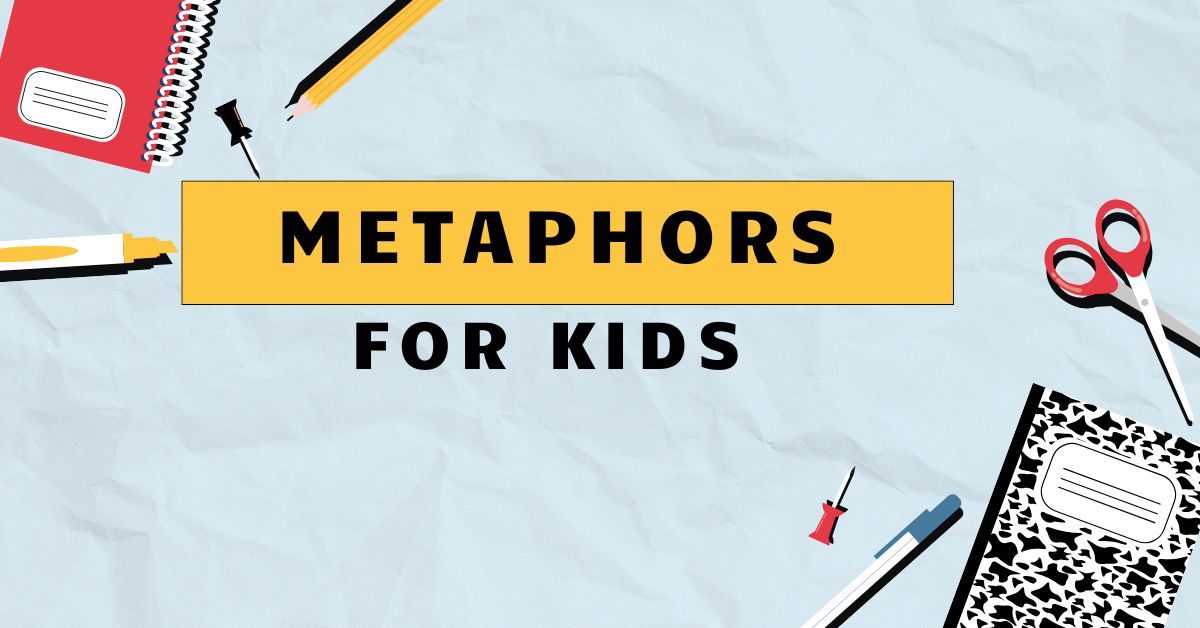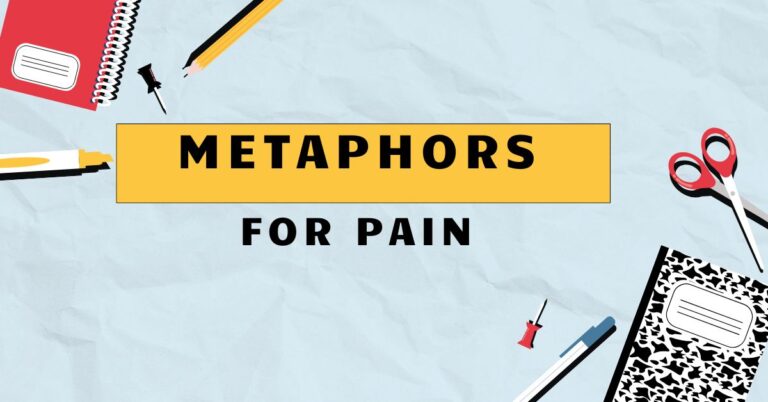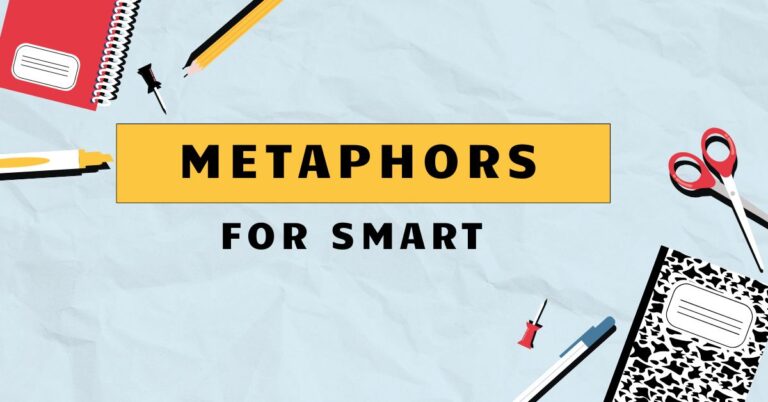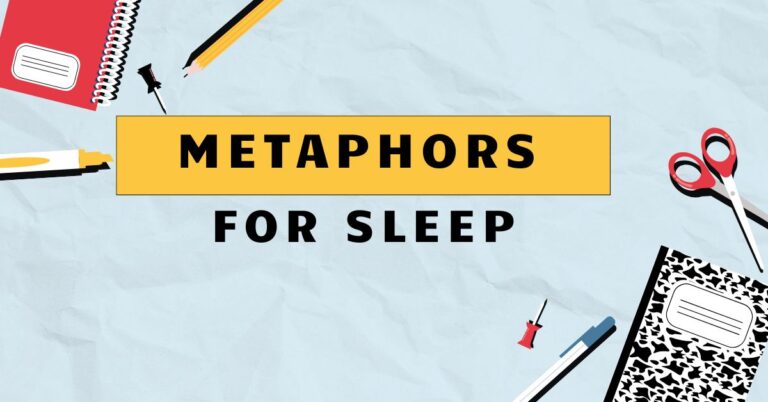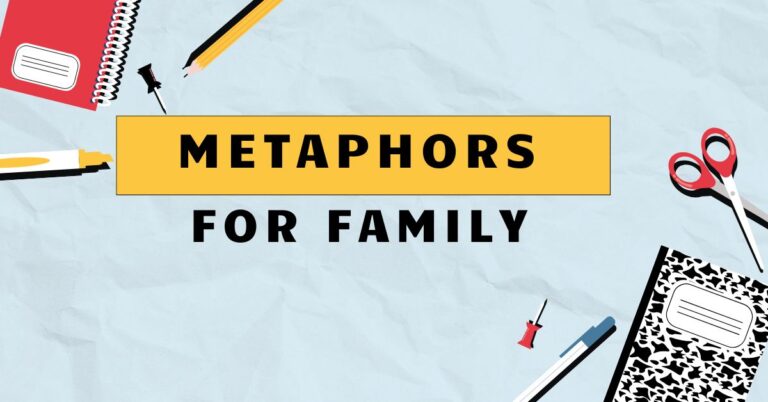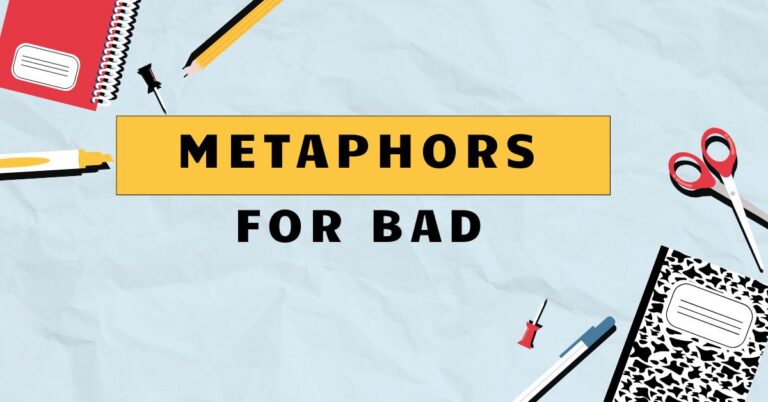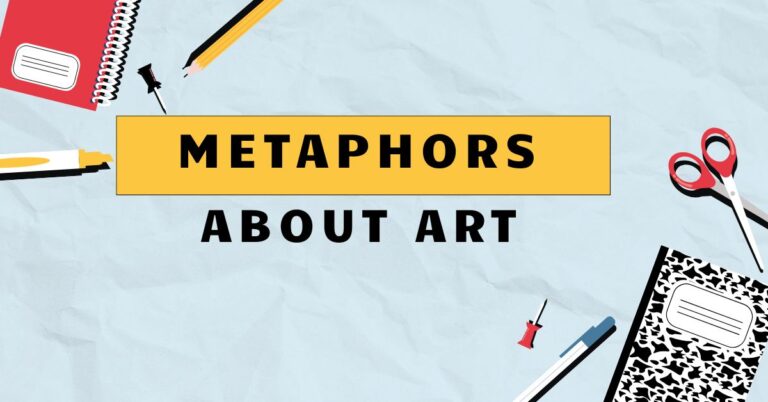43 Metaphors For Kids: Understanding Figurative Language
Metaphors are a fantastic way to add color and creativity to our language. They help us understand things in new and exciting ways by comparing them to something else.
Learning about metaphors not only improves reading comprehension but also boosts creative writing skills. This article is designed for kids, parents, and teachers who want to explore the wonderful world of metaphors and how they make our language more interesting and expressive.
Table of Contents
- Introduction
- What is a Metaphor?
- Structural Breakdown of Metaphors
- Types of Metaphors
- Examples of Metaphors
- Usage Rules for Metaphors
- Common Mistakes with Metaphors
- Practice Exercises
- Advanced Topics in Metaphors
- Frequently Asked Questions (FAQ)
- Conclusion
What is a Metaphor?
A metaphor is a figure of speech that directly compares two different things without using words like “like” or “as.” It suggests that one thing is another in order to highlight a shared quality or create a vivid image in the reader’s mind. Metaphors are powerful tools that can make writing more engaging and help us understand abstract concepts by relating them to something familiar.
The function of a metaphor is to transfer qualities from one thing (the source) to another (the target). This transfer of qualities helps us see the target in a new light.
For example, if we say “The classroom was a zoo,” we’re not saying the classroom literally contained animals. Instead, we’re using the “zoo” (source) to describe the chaotic and noisy atmosphere of the classroom (target).
Metaphors are used in various contexts, from everyday conversations to literature and poetry. They add depth and richness to our language, making it more expressive and imaginative.
Understanding metaphors is essential for interpreting literature and improving creative writing skills.
Structural Breakdown of Metaphors
A metaphor essentially has two parts: thetenorand thevehicle. The tenor is the subject that is being described, and the vehicle is what the subject is being compared to.
The connection between the tenor and vehicle creates the metaphorical meaning.
For example, in the metaphor “Time is a thief,” “time” is the tenor (the subject) and “thief” is the vehicle (what time is being compared to). The shared quality is that both time and a thief take something away from us, whether it’s moments or possessions.
Metaphors work by implying a similarity, not stating it directly. This implied comparison invites the reader to make a connection and understand the subject in a new way.
The effectiveness of a metaphor depends on how well the reader understands the vehicle and can relate it to the tenor.
Types of Metaphors
Metaphors come in different forms, each with its own unique characteristic and purpose. Understanding these types can help you identify and use metaphors more effectively.
Standard Metaphors
Standard metaphors are common and easily recognizable comparisons that are frequently used in everyday language. They are often simple and straightforward, making them easy to understand.
These metaphors help to convey ideas quickly and effectively.
For example, “Life is a journey” is a standard metaphor that compares the experience of living to a trip, with its ups and downs, twists and turns. Another example is “The world is a stage,” which compares the world to a theatrical performance, with people playing different roles.
Extended Metaphors
An extended metaphor is a metaphor that is developed over several lines or even throughout an entire work. It allows for a more detailed and complex comparison, exploring different aspects of the relationship between the tenor and the vehicle.
Consider the poem “The Road Not Taken” by Robert Frost. The road is an extended metaphor for life’s choices.
The speaker reflects on a decision he made, using the diverging roads as a symbol for the different paths one can take in life. The entire poem elaborates on this central metaphor.
Mixed Metaphors
A mixed metaphor combines two or more inconsistent metaphors in a single expression. This often results in a humorous or confusing effect, as the different images clash with each other.
Mixed metaphors are generally considered a mistake in writing, as they can undermine clarity and create illogical comparisons.
An example of a mixed metaphor is “Let’s nip it in the bud and iron out the wrinkles.” This combines the idea of stopping something early (“nip it in the bud”) with the idea of resolving problems (“iron out the wrinkles”). The two images don’t quite fit together, creating a nonsensical effect.
Dead Metaphors
Dead metaphors are metaphors that have become so overused that they have lost their original figurative meaning and are now considered part of everyday language. They are often used without the speaker even realizing that they were once metaphors.
Because of their frequent use, they no longer evoke a strong image or comparison.
Examples of dead metaphors include “the leg of a table,” “the eye of a needle,” and “falling in love.” These phrases were once creative comparisons, but they have become so common that they are now literal terms.
Examples of Metaphors
Metaphors can be used to describe a wide range of things, from people and emotions to places and objects. Here are some examples of metaphors categorized by what they describe.
Metaphors Describing People
Metaphors can be used to describe a person’s character, personality, or behavior by comparing them to something else. These comparisons can be flattering, critical, or simply descriptive.
The following table showcases various metaphors used to describe people, providing a clear understanding of how these comparisons work.
| Metaphor | Explanation |
|---|---|
| He is a lion in battle. | He is brave and fierce. |
| She is a ray of sunshine. | She is cheerful and bright. |
| My brother is a computer. | My brother is intelligent and logical. |
| The teacher is a guiding star. | The teacher provides guidance and direction. |
| He is a rock for his family. | He is strong and supportive. |
| She is a night owl. | She prefers to be awake and active during the night. |
| He’s a lone wolf. | He prefers to be alone and independent. |
| She’s a social butterfly. | She is outgoing and enjoys socializing with others. |
| He’s a fountain of knowledge. | He is very knowledgeable and shares information freely. |
| She’s a diamond in the rough. | She has potential but needs refinement. |
| He is a bear in the morning. | He is grumpy and irritable in the morning. |
| She is a dove. | She is peaceful and gentle. |
| He is a brick wall. | He is unyielding and difficult to persuade. |
| She is a walking encyclopedia. | She has a vast amount of knowledge. |
| He is a shining example. | He is a role model. |
| She is a breath of fresh air. | She is refreshing and revitalizing. |
| He is a tornado. | He is destructive and chaotic. |
| She is an open book. | Her thoughts and feelings are easily known. |
| He is a workhorse. | He works very hard. |
| She is a ball of energy. | She is very energetic and enthusiastic. |
| He is a shadow of his former self. | He is not as strong or capable as he used to be. |
| She is a pillar of the community. | She is a strong and supportive member of the community. |
| He is a puppet on a string. | He is controlled by someone else. |
| She is a chameleon. | She adapts easily to different situations and people. |
Metaphors Describing Emotions
Emotions are often abstract and difficult to describe directly. Metaphors can help to convey the intensity and nature of emotions by comparing them to tangible things or experiences.
The following table provides examples of metaphors that describe emotions, making it easier to understand how these figurative expressions work.
| Metaphor | Explanation |
|---|---|
| Anger is a fire. | Anger is intense and destructive. |
| Sadness is a heavy blanket. | Sadness is oppressive and weighs you down. |
| Joy is sunshine. | Joy is bright and uplifting. |
| Fear is a dark shadow. | Fear is lurking and threatening. |
| Love is a battlefield. | Love is challenging and requires effort. |
| Grief is a bottomless pit. | Grief is never-ending and profoundly deep. |
| Hope is a fragile seed. | Hope is delicate and needs nurturing. |
| Anxiety is a tangled web. | Anxiety is complex and difficult to unravel. |
| Envy is a green-eyed monster. | Envy is consuming and destructive. |
| Despair is a cold wind. | Despair is chilling and isolating. |
| Excitement is a bubbling spring. | Excitement is vibrant and overflowing. |
| Frustration is a brick wall. | Frustration is an obstacle that prevents progress. |
| Contentment is a warm fire. | Contentment is comforting and satisfying. |
| Loneliness is an empty room. | Loneliness is isolating and devoid of comfort. |
| Regret is a bitter pill. | Regret is unpleasant and hard to accept. |
| Jealousy is a consuming flame. | Jealousy is destructive and overwhelming. |
| Courage is a lion’s heart. | Courage is brave and strong. |
| Shame is a heavy cloak. | Shame is burdensome and hides true self. |
| Nostalgia is a faded photograph. | Nostalgia is a memory of the past. |
| Peace is a gentle stream. | Peace is calming and tranquil. |
| Betrayal is a stab in the back. | Betrayal is hurtful and deceitful. |
| Confusion is a dense fog. | Confusion is disorienting and unclear. |
| Apathy is a blank wall. | Apathy is indifferent and unresponsive. |
| Resentment is a slow burn. | Resentment is a lingering and destructive feeling. |
Metaphors Describing Places
Metaphors can vividly depict the atmosphere, characteristics, or significance of a place by comparing it to something else. These comparisons can evoke a sense of wonder, danger, or tranquility.
The following table illustrates metaphors used to describe places, enhancing understanding through vivid imagery.
| Metaphor | Explanation |
|---|---|
| The city is a jungle. | The city is chaotic and dangerous. |
| The library is a treasure trove. | The library is full of valuable knowledge. |
| His room is a pigsty. | His room is messy and disorganized. |
| The school is a prison. | The school is restrictive and confining. |
| The park is an oasis. | The park is a peaceful and refreshing place. |
| The office is a pressure cooker. | The office is stressful and intense. |
| The internet is an information highway. | The internet is a vast and accessible source of information. |
| The courtroom is a battleground. | The courtroom is a place of conflict and competition. |
| The hospital is a sanctuary. | The hospital is a safe and healing place. |
| The forest is a cathedral. | The forest is grand and awe-inspiring. |
| The beach is a playground. | The beach is a place for fun and recreation. |
| The mountains are silent giants. | The mountains are massive and imposing figures. |
| The desert is a sea of sand. | The desert is vast and barren. |
| The garden is a tapestry of colors. | The garden is a beautiful and intricate display. |
| The city at night is a symphony of lights. | The city is vibrant and full of energy. |
| The old house is a museum of memories. | The old house is full of history and nostalgia. |
| The small town is a bubble. | The small town is isolated and sheltered. |
| The school hallway is a runway. | The school hallway is a place for showing off. |
| The kitchen is the heart of the home. | The kitchen is the center of family life. |
| The library is a gateway to knowledge. | The library provides access to learning and information. |
Metaphors Describing Objects
Metaphors can bring inanimate objects to life by attributing human qualities or comparing them to other familiar things. This can make descriptions more engaging and memorable.
The following table provides examples of metaphors used to describe objects, highlighting their effectiveness in creating vivid images.
| Metaphor | Explanation |
|---|---|
| The computer is a brain. | The computer is intelligent and processes information. |
| The car is a metal horse. | The car is a means of transportation. |
| The book is a window to another world. | The book offers new perspectives and experiences. |
| The phone is a lifeline. | The phone provides essential communication. |
| The clock is a relentless taskmaster. | The clock controls our time and schedules. |
| The pen is a sword. | The pen has the power to influence and persuade. |
| The television is a window to the world. | The television provides access to news and entertainment. |
| The mirror is a judge. | The mirror reflects our appearance and flaws. |
| The door is a gateway to opportunity. | The door provides access to new possibilities. |
| The candle is a beacon of hope. | The candle represents guidance and light in darkness. |
| The heart is a fragile vase. | The heart is delicate and easily broken. |
| The idea is a seed. | The idea has the potential to grow and develop. |
| The problem is a knot. | The problem is complex and difficult to untangle. |
| The opportunity is a golden ticket. | The opportunity is valuable and rare. |
| The secret is a locked box. | The secret is hidden and protected. |
| The challenge is a mountain to climb. | The challenge is difficult but rewarding to overcome. |
| The dream is a distant star. | The dream is far away but worth striving for. |
| The memory is a faded photograph. | The memory is old and slightly unclear. |
| The habit is a chain. | The habit is restrictive and difficult to break. |
| The excuse is a crutch. | The excuse is a weak and unreliable support. |
Metaphors Describing Time
Time is an abstract concept, and metaphors can help us understand its passage, value, and impact by comparing it to tangible things or experiences.
The following table provides examples of metaphors used to describe time, making it easier to grasp its elusive nature.
| Metaphor | Explanation |
|---|---|
| Time is a river. | Time flows continuously and cannot be stopped. |
| Time is a thief. | Time steals our youth and opportunities. |
| Time is money. | Time is valuable and should be used wisely. |
| Time is a healer. | Time can help us recover from emotional wounds. |
| Time is a test. | Time reveals our true character and abilities. |
| Time is a canvas. | Time provides an opportunity to create memories. |
| Time is a mirror. | Time reflects our actions and choices. |
| Time is a teacher. | Time imparts lessons and wisdom. |
| Time is a game. | Time involves strategy and competition. |
| Time is a dance. | Time involves rhythm and movement. |
| Time is a clock. | Time is measured and structured. |
| Time is a journey. | Time involves progress and experiences. |
| Time is a story. | Time unfolds events and narratives. |
| Time is an ocean. | Time is vast and mysterious. |
| Time is a garden. | Time requires cultivation and care. |
| Time is a bridge. | Time connects the past and the future. |
| Time is a shadow. | Time is fleeting and transient. |
| Time is a sculptor. | Time shapes our lives and identities. |
| Time is a puzzle. | Time involves challenges and solutions. |
| Time is a song. | Time provides rhythm and harmony to life. |
Usage Rules for Metaphors
Using metaphors effectively requires understanding some basic rules. First, ensure that the comparison is clear and meaningful.
The reader should be able to understand the connection between the tenor and the vehicle. Second, avoid mixed metaphors, as they can confuse the reader and undermine the impact of your writing.
Third, use metaphors sparingly and strategically. Overusing metaphors can make your writing feel forced and unnatural.
A good metaphor should also be original and imaginative. Try to come up with fresh comparisons that will surprise and delight your readers.
However, be careful not to be too obscure or abstract, as this can make your metaphor difficult to understand.
Finally, consider your audience when using metaphors. A metaphor that works well for one audience may not work for another.
Choose metaphors that are appropriate for the age, background, and knowledge level of your readers.
Common Mistakes with Metaphors
One common mistake is usingclichéd metaphors. These are metaphors that have been overused and have lost their impact.
For example, saying “Life is a highway” is a clichéd metaphor that doesn’t evoke much emotion or imagery.
Another common mistake is using mixed metaphors, as mentioned earlier. These can create confusion and undermine the clarity of your writing.
Here’s a table illustrating common mistakes with metaphors, along with corrected examples.
| Incorrect | Correct | Explanation |
|---|---|---|
| The project is a rollercoaster ride and a piece of cake. | The project is a rollercoaster ride. | Avoid mixing metaphors for clarity. |
| He is as brave as a lion (simile). | He is a lion. | Ensure the statement is a direct comparison. |
| Time flies like an arrow. | Time is an arrow. | Avoid using “like” or “as” in metaphors. |
| She is a shining star in the dark night (cliché). | She is a beacon of hope. | Avoid clichés for originality. |
| His words were music to my ears, but they fell on deaf ears. | His words were music to my ears. | Maintain consistency in imagery. |
Practice Exercises
Now that you’ve learned about metaphors, it’s time to put your knowledge to the test with these practice exercises.
Exercise 1: Identifying Metaphors
Read each sentence and identify the metaphor. Explain what two things are being compared.
| Question | Answer |
|---|---|
| 1. The world is a stage. | The world is being compared to a stage. |
| 2. Her heart is a stone. | Her heart is being compared to a stone. |
| 3. The classroom was a zoo. | The classroom is being compared to a zoo. |
| 4. He is a night owl. | He is being compared to a night owl. |
| 5. Life is a highway. | Life is being compared to a highway. |
| 6. The internet is an information superhighway. | The internet is being compared to an information superhighway. |
| 7. My memory is a steel trap. | My memory is being compared to a steel trap. |
| 8. He is a walking encyclopedia. | He is being compared to a walking encyclopedia. |
| 9. The city is a concrete jungle. | The city is being compared to a concrete jungle. |
| 10. She is a ray of sunshine. | She is being compared to a ray of sunshine. |
Exercise 2: Creating Your Own Metaphors
Complete the following sentences by creating your own metaphors.
| Question | Answer |
|---|---|
| 1. The rain was… | The rain was a curtain of tears. |
| 2. My fear is… | My fear is a dark shadow. |
| 3. The music was… | The music was a soothing balm. |
| 4. Her smile is… | Her smile is a ray of hope. |
| 5. The wind is… | The wind is a whispering ghost. |
| 6. The snow is… | The snow is a blanket of peace. |
| 7. His anger is… | His anger is a raging fire. |
| 8. The night is… | The night is a velvet cloak. |
| 9. My thoughts are… | My thoughts are a tangled web. |
| 10. The world is… | The world is a colorful mosaic. |
Exercise 3: Completing the Metaphor
Choose the best word to complete the metaphor in each sentence.
| Question | Answer |
|---|---|
| 1. The test was a _____. (a) breeze (b) storm (c) cloud | (b) storm |
| 2. Her voice was _____. (a) silk (b) rough (c) sandpaper | (a) silk |
| 3. He is a _____ in the dark. (a) star (b) moon (c) sun | (a) star |
| 4. The news was a _____ to her. (a) song (b) dagger (c) poem | (b) dagger |
| 5. The city is a _____ of dreams. (a) forest (b) ocean (c) garden | (c) garden |
| 6. My heart is a _____. (a) drum (b) stone (c) feather | (a) drum |
| 7. The computer is a _____ for ideas. (a) factory (b) field (c) desert | (a) factory |
| 8. His mind is a _____. (a) maze (b) meadow (c) mountain | (a) maze |
| 9. The project was a _____. (a) race (b) walk (c) climb | (c) climb |
| 10. The answer is a _____. (a) key (b) door (c) wall | (a) key |
Advanced Topics in Metaphors
For advanced learners, exploring the philosophical implications of metaphors can be fascinating. Metaphors not only shape our language but also influence our thinking and understanding of the world.
Conceptual metaphor theory, for example, suggests that our conceptual system is largely metaphorical, meaning that we understand abstract concepts in terms of more concrete ones.
Analyzing metaphors in literature can also provide deeper insights into the author’s intent and the themes of the work. Pay attention to the recurring metaphors and how they contribute to the overall meaning of the text.
Consider the cultural and historical context of the metaphors and how they reflect the values and beliefs of the time.
Understanding the role of metaphors in rhetoric and persuasion can also be valuable. Metaphors can be used to frame arguments, evoke emotions, and influence opinions.
By analyzing the metaphors used in political speeches and advertisements, you can gain a better understanding of how language is used to shape public discourse.
Frequently Asked Questions (FAQ)
- What is the difference between a metaphor and a simile?
A metaphor directly compares two things by saying one thing is another, without using “like” or “as.” A simile, on the other hand, compares two things using “like” or “as.” For example, “He is a lion” is a metaphor, while “He is brave like a lion” is a simile.
- Why are metaphors important in writing?
Metaphors add depth, color, and creativity to writing. They help readers understand abstract concepts by relating them to something familiar. Metaphors also make writing more engaging and memorable.
- How can I improve my use of metaphors?
Practice using metaphors in your writing and pay attention to the metaphors used by others. Read widely and analyze how authors use metaphors to create meaning. Experiment with different comparisons and try to come up with original and imaginative metaphors.
- What is a dead metaphor?
A dead metaphor is a metaphor that has become so overused that it has lost its original figurative meaning and is now considered part of everyday language. Examples include “the leg of a table” and “falling in love.”
- What is a mixed metaphor?
A mixed metaphor combines two or more inconsistent metaphors in a single expression. This often results in a humorous or confusing effect. Mixed metaphors are generally considered a mistake in writing.
- Can metaphors be used in everyday conversation?
Yes, metaphors are commonly used in everyday conversation to express ideas and emotions in a vivid and engaging way. They can make your speech more interesting and help you connect with others.
- How do I avoid using clichés in my metaphors?
To avoid using clichés, try to think beyond the obvious comparisons. Ask yourself what unique qualities or characteristics you want to emphasize and look for less common ways to express them. Brainstorming different ideas and asking for feedback can also help.
- Are metaphors only used in literature and poetry?
No, metaphors are used in various forms of communication, including everyday conversations, speeches, advertisements, and even scientific explanations. They are a versatile tool for making complex ideas more understandable and engaging.
- How can metaphors help with understanding complex topics?
Metaphors simplify complex topics by relating them to concepts that are already familiar. They create a mental image or framework that makes it easier to grasp new information and see connections.
- What role do metaphors play in creative writing?
Metaphors are essential in creative writing for enhancing imagery, evoking emotions, and adding depth to the narrative. They allow writers to convey ideas in a more imaginative and impactful way, making the writing more memorable and engaging for readers.
Conclusion
Metaphors are powerful tools that can enrich our language and enhance our understanding of the world. By comparing different things, metaphors create vivid images and help us see connections that we might otherwise miss.
Understanding metaphors is essential for interpreting literature, improving creative writing skills, and communicating effectively. Keep practicing, stay creative, and enjoy the journey of exploring the wonderful world of metaphors.
Remember to pay attention to the metaphors used by others and experiment with creating your own. With practice, you’ll become more confident and skilled at using metaphors to express your
Advanced Topics in Metaphors
For advanced learners, exploring the philosophical implications of metaphors can be fascinating. Metaphors not only shape our language but also influence our thinking and understanding of the world.
Conceptual metaphor theory, for example, suggests that our conceptual system is largely metaphorical, meaning that we understand abstract concepts in terms of more concrete ones.
Analyzing metaphors in literature can also provide deeper insights into the author’s intent and the themes of the work. Pay attention to the recurring metaphors and how they contribute to the overall meaning of the text.
Consider the cultural and historical context of the metaphors and how they reflect the values and beliefs of the time.
Understanding the role of metaphors in rhetoric and persuasion can also be valuable. Metaphors can be used to frame arguments, evoke emotions, and influence opinions.
By analyzing the metaphors used in political speeches and advertisements, you can gain a better understanding of how language is used to shape public discourse.
Frequently Asked Questions (FAQ)
Conclusion
Metaphors are powerful tools that can enrich our language and enhance our understanding of the world. By comparing different things, metaphors create vivid images and help us see connections that we might otherwise miss.
Understanding metaphors is essential for interpreting literature, improving creative writing skills, and communicating effectively. Keep practicing, stay creative, and enjoy the journey of exploring the wonderful world of metaphors.
Remember to pay attention to the metaphors used by others and experiment with creating your own. With practice, you’ll become more confident and skilled at using metaphors to express your thoughts and ideas in new and exciting ways.
Embrace the power of figurative language and let your imagination soar!

